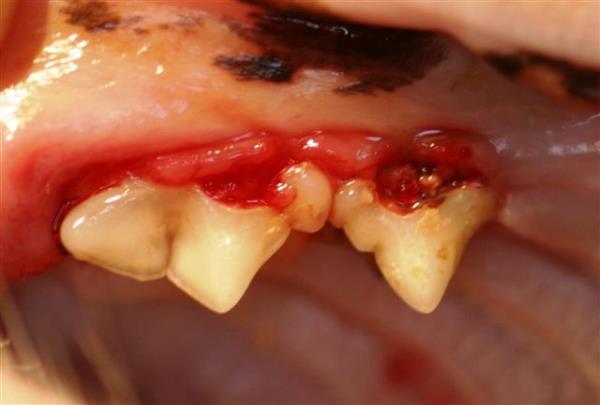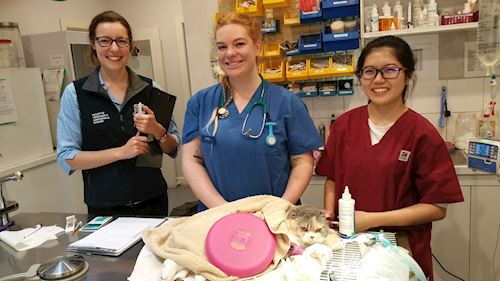Feline Tooth Resorption (FORL)

Feline odontoclastic resorption lesions – FORL’s are a common and painful condition, seen by cat dentists, in domestic cats. Cat dental studies have shown over 50% of adult cats develop tooth resorption. The teeth become functionally destroyed, and painful as a result of tooth resorption. These feline dental lesions were originally called feline odontoclastic resorption lesions or neck lesions, and cat dental “cavities” because the lesions were typically observed in the “neck” region of the tooth. This is very close to the area where the tooth meets the gum line. Initially, it appears that the gum tissue is growing into the tooth or is covering over the base of the tooth and some cases, there appears to be a “hole in the tooth” .
What is the cause of tooth resorption?
The exact cause of tooth resorption has not been definitively established; but feline dentists have found that cats who have had tooth resorption diagnosed, will very likely develop additional lesions in the future.
How can we prevent tooth resorption in cats?
An cause of tooth resorption has not been established. It is therefore not possible to effectively prevent this . Keeping a clean oral cavity is the start.
What are the signs and symptoms of tooth resorption?
Often the owner will not see any symptoms even though its present and painful!
Holes in the teeth!, redness of the gums are typical .
Pain – Cats do not readily demonstrate pain. Signs of pain can be very subtle with these cats.
Redness of gums, increased salivation or changes in food preferences..
Some cats with tooth resorption also have generalized oral inflammation
What is the treatment for tooth resorption?
The best treatment for tooth resorption is removing the affected teeth. Vet dentists prefer extraction to filling in the defects, or root canals, medications etc. But affected teeth are fragile and fracture during extraction.
Ideally dental radiographs are done to determine if the tooth roots need to be completely removed as they may be partly resorbed and can be left in place!
Ideally the entire tooth should be removed to avoid infection or other problems.
Many cats with feline stomatitis have tooth resorption. In treating these cats, it is essential to remove tooth structure to help eliminate the immune stimulation, and inflammation that typically is present.
Covering antibiotics with a feline dental spectrum and easily administered anti inflammatory are usually also dispensed.

